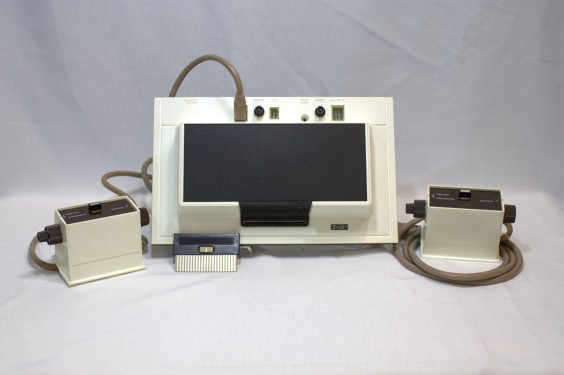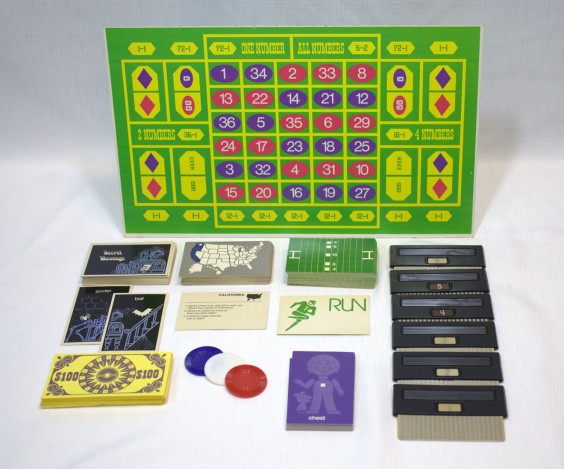The Magnavox Odyssey
Written by Season // March 3, 2016 // Game Lore // No comments
“ODYSSEY is thought, action, and reaction.” So proclaims an advertisement for the 1972 Magnavox Odyssey, the world’s first home gaming system. Based on a 1967 prototype by Ralph Baer known as “The Brown Box,” the Magnavox Odyssey sold only around 300,000+ units at $99.95 each, about $570 in today’s dollars.
Its outside is a cream plastic with wood-grain trim and a slot for cards, which use card edge pins to program the Odyssey to play games. It came with two large controllers with knobs on each side to control the onscreen paddles. One knob had an inner knob that could be rotated to control spin.
Translucent plastic overlays placed on the television set the scene for each game, which had very little variation between them without the different overlays. Games included with the system were Table Tennis, Simon Says, Submarine, and more. The Odyssey also came with score card sheets, dice, and playing cards, with later optional peripherals being a “light gun” and a golf putting joystick.
Installing the Odyssey included extensive – by today’s standards – antenna and wire connections and television adjustments, and the console could be powered by six C batteries or an AC power supply, the latter of which was sold separately.
Despite the Odyssey’s low sales of 350,000 units, the Odyssey was the predecessor to all home gaming systems and directly influenced Atari’s runaway hit Pong. Magnavox discontinued the Odyssey in 1975 but continued the series with the 200, 300, 2000, 3000, and finally the 4000, all simpler consoles than the original Odyssey. Magnavox was purchased by Philips, a Dutch TV manufacturer, in 1974, which then released its own version of the Odyssey in Europe and the United States. You can see the original Odyssey, including a promotional video and a TV ad, on display at Digital Games Museum’s Pong exhibit.
-Season
Gift of Scott Correia – 2015.012.608a



